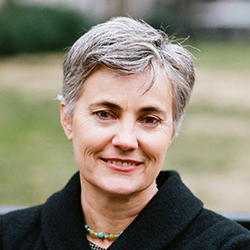Multiple Modes of Transportation, Shared Rides Are the Future of Mobility
Panelists discussed how the next generation of innovations could reshape America’s car-centric lifestyle
Affordable access to automobiles disrupted the way Americans move—and the pandemic brought its own disturbance.

As lockdowns spread across the globe, people moved much less frequently. The sudden halt in transportation gave city planners, policy makers, and mobility companies the opportunity to rethink the ways people — and their cars, bikes, and scooters — share the road.
During the Farley Center for Entrepreneurship and Innovation’s “The Future of Mobility Innovation in America” panel discussion on May 27, innovators from the mobility industry examined the ways the pandemic reset the table for innovations, the century-long reliance on the automobile, and the new mobility options that could reshape the way Americans move. The virtual event was moderated by Vijay Vaitheeswaran, visiting fellow at the Farley Center and global energy and climate innovation editor for The Economist.
Robin Chase, co-founder and former CEO of Zipcar, said the pandemic forced people to be resilient when looking for alternative and socially distanced ways of moving around and getting to work.
 “The pandemic showed us that we need to have multiple modes of transportation,” Chase said. “It can’t be that you can only get someplace by car. Cars will still be part of our lives, but we need to get out of the single-occupancy car ride for the majority of trips.”
“The pandemic showed us that we need to have multiple modes of transportation,” Chase said. “It can’t be that you can only get someplace by car. Cars will still be part of our lives, but we need to get out of the single-occupancy car ride for the majority of trips.”
Enter the scooter, e-bike, and other micro-mobility options emerging in cities across the globe. While overseeing vehicle operations for Bird Rides in Europe, Kasey Lundquist (MBA ’14), head of vehicle operations, saw different reactions to micro-mobility options during the pandemic. Though companies shut down completely in some cities, newly launched Bird scooters flooded the streets in others as people opted for a less-crowded commute.
That surge in micro-mobility options happened at the same time restaurants and shared rides were competing for newly available curb space. The “street-fight” will likely be permanent, said Jon McNeill (’89), former COO of Lyft and former Tesla president.

“When the cities emptied out, city planners realized they have a valuable asset, and that’s curb space,” McNeill said. “The pandemic gave them the freedom to paint that curb space.”
It also forced a focus on where micro-mobility devices should move. “The pandemic accelerated the rate at which cities were thinking about micro-mobility trials, which can only benefit the future,” Lundquist said.
Still, cars remain the major player. During the pandemic, car sales went through the roof, McNeill added.
“People considered cars their PPE,” he said. “We saw people buy a record number of cars, which could be considered a step backward. The good news is a record number of those cars were electric.”
Electric cars are considerably more environmentally friendly than traditional gasoline-powered models, but they shouldn’t be viewed as the only solution to the climate crisis, Chase said. “If we’re going to reduce emissions by 2030, the personal car needs to take a backseat to shared transportation and micro-mobility.”
 Convenience and cost are determining whether people drive, bike, or scoot, said Shawn Carolan, partner at Menlo Ventures and early investor in Uber. One of the most common reasons people get into their car is to purchase goods. In a rainy city like Seattle, a wet scooter ride to the grocery store might not be as appealing as a dry car ride.
Convenience and cost are determining whether people drive, bike, or scoot, said Shawn Carolan, partner at Menlo Ventures and early investor in Uber. One of the most common reasons people get into their car is to purchase goods. In a rainy city like Seattle, a wet scooter ride to the grocery store might not be as appealing as a dry car ride.
“Consumer behavior is very nuanced,” Carolan said. “You have to consider how people are choosing to spend their time and money. People are going to ask, ‘What’s cheaper for me, what’s easier for me to get the job done?’”
If the goods come to their doorstep, people might not rely as much on their own cars, Carolan added. The rise in services such as UberEats and other next generation grocery delivery services during the pandemic might keep people out of their cars.

McNeill agreed the high cost of cars plus the lower frequency of using them is forcing many people to reevaluate car ownership.
“It doesn’t make sense in a lot of dense urban environments for the trips that are less than five miles to be in car,” McNeill said. Other important factors must be considered, McNeill added. People who live near highways, often from low-income communities, are more likely to die of lung cancer from emissions, he said.
“There’s an equality issue that comes along with all these personal vehicles,” McNeill added. “A critical transportation issue that is driving congestion in traffic up is delivery. That’s a largely invisible source today that needs to be accounted for.”
